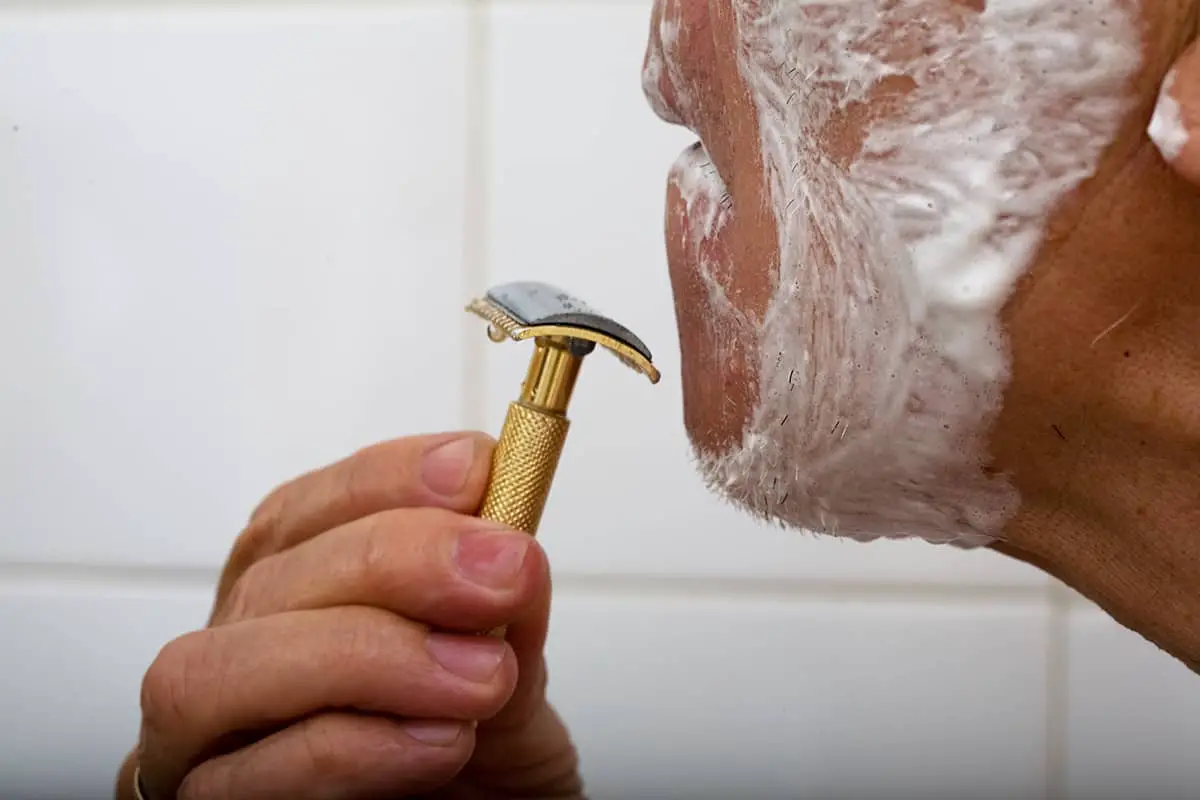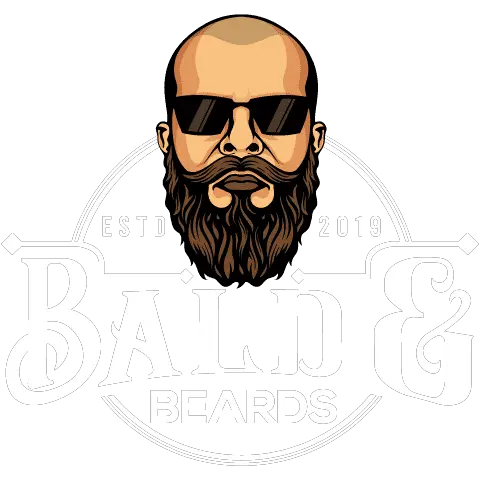Truth is, shaving can be a pain, particularly when you cut it too close or have sensitive skin. Razor burn is one of the common problems of shaving with dry skin or those prone to breakouts from dull razors.
If you experience these razor rashes and bumps, there are some quick ways to prevent and treat your skin before it happens again. This guide to razor burn and bumps offers some expert treatments and proven home remedies to rid yourself of this red irritation for good.
What is Razor Burn?
Razor burn is a red, irritated rash that shows up after shaving a sensitive area of skin. This may occur from shaving too closely or might be a reaction from inferior shaving cream or a dull razor.
Hair removal can lead to razor burn and razor bumps, but these typically go away in 3 to 4 days, unless hairs growing underneath lead to ingrown hair pustules.
Because razor bumps have a tendency to curl, they’re more common in people with curly hair. Get the right help – see or Pro Guides for: ingrown facial hair or ingrown scalp hair.
Other Names for Razor Burn
If talking to your doctor about this issue, you may hear these terms:
- Pseudofolliculitis barbae
- Pseudofolliculitis pubis (bumps in your pubic area)
- Barber’s itch
- Folliculitis barbae traumatica
Symptoms
- Itchy skin patch
- Painful, inflamed skin
- Darkening of the skin
- Small bumps or pustules
- Ingrown hairs
Razor Burn Causes
A razor burn is typically caused by shaving with a dull razor. However, if you also get red bumps along with razor burn, your shaven hairs are getting stuck underneath your skin. This can cause ingrown hairs and pimples after shaving for a temporary period.
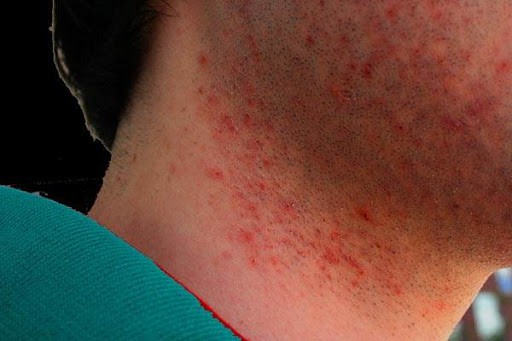
An easy, clean shave should leave your skin feeling smooth, soft, and vibrant, but if you notice red bumps 20 minutes later, it’s likely the raised red irritation known as razor burn.
If your razor isn’t sharp enough, you likely have to shave the same area repeatedly. Each time, this irritates your skin and more pressure may lead to a too-close shave. The friction causes small abrasions that lead to a red, irritated skin patch. It’s similar in appearance to beard burn, but worse because it can lead to ingrown hairs and beard acne.
For those experiencing razor burn, it won’t last forever, but if you want it to go away faster, there are some remedies you can do at home, as well as over-the-counter treatments.
Treatment
The good news is that razor burn typically only lasts 1 to 2 days, but it can be extremely annoying, and if it’s somewhere on your face, it’s just unpleasant.
Never fear! There are a few things you can do right away to treat a razor burn and diminish its red, irritated appearance.
1. What to Do First
Apply aloe vera. It’s an all-natural cure, and there are many creams, lotions, and raw aloe vera products that can help with this issue. Aloe vera also works for sunburns on your scalp, face, and body.
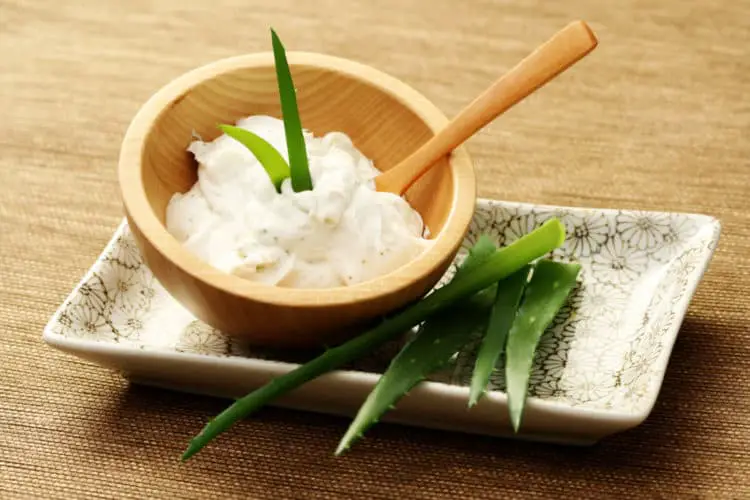
Next, coconut oil also works, and it’s been medically reviewed for its ability to heal burns and skin irritation. Research from 2008 also found that coconut oil was best for healing burns due to its anti-inflammatory properties.
2. Home Remedies
Next, you should reduce inflammation by applying another treatment to the affected area.
If your razor burn looks worse than tiny red bumps, it’s time to seek real medical advice.
One of the best ways to get rid of razor burn is applying an apple cider vinegar (ACV) plus water solution with a cotton swab or Q-Tip to the area. You’ll combine equal parts ACV and water to create this remedy, then apply to the affected burn area, allowing it to dry on its own.
Due to its anti-inflammatory antiseptic properties, apple cider vinegar works for a variety of cuts, nicks, and rash treatments.
Another home remedy uses tea tree oil and olive oil, which is better for sensitive skin. As an anti-inflammatory, antibacterial, and antiseptic, tea tree oil can be combined with olive oil to treat razor burn.
For this remedy, mix one tablespoon of olive oil with 6 drops of tea tree oil. Allow it to sit for about 15 minutes, then wipe away with warm, damp cloth.
3. Long-Term Treatments
This can happen with sensitive skin. No matter what kind of razors you try, your skin just seems to break out in red bumps. When this happens, you’ll need to pre-treat your skin and moisturize, as it’s likely you have dry skin that’s causing more irritation to flare up.
- Try a salt-based exfoliator or soak in a tub with 2 cups of Epsom salt.
- Apply a soothing rash cream to the area, like Weleda Calendula Diaper Rash Cream
- Go with an antibacterial witch hazel treatment like Shea Tea Tree Oil & Shea Butter After Shave Elixir
Prevention
It’s easy to prevent razor burn. If you notice you have razor burn, you should first check what you’re shaving with. It should be a sharp razor that only takes 1 or 2 strokes to get a clean shave. If you have to go over a patch more than two times, you may get razor burn.
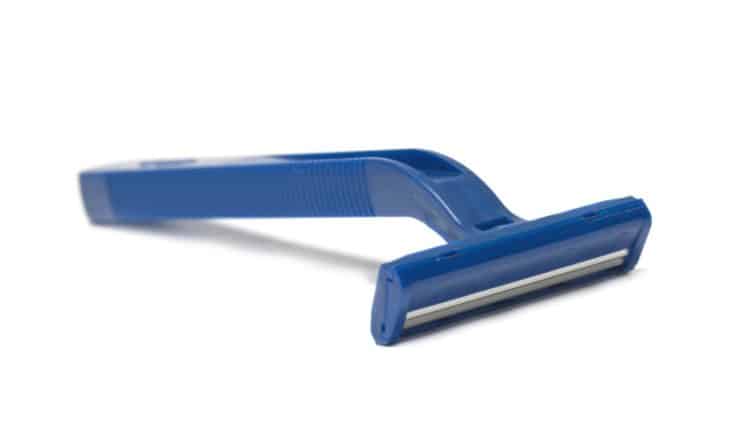
Do you have an old disposable razor? It’s time to get a new one. If a cartridge razor, when’s the last time you replaced it? These razors are typically only good for 3 to 4 shaves before dulling, so after 10 shaves, it’s likely too dull and results in razor burn.
In addition to checking your razor blade and replacing old ones, you should also use a good shaving cream that will moisturize the skin and allow the blade to glide smoothly over your skin. If you also notice dry skin with a razor burn, it’s likely because you’ve only used soap or water to shave with. Instead, try a high-quality shaving soap.
- Exfoliate skin before shaving to get rid of dead skin cells.
- Use a good shaving cream.
- Avoid pulling skin tight while shaving.
- Shave toward hair growth and short strokes.
- Rinse blade frequently.
- After shaving, close pores by rinsing with cold water.
- Use a quality aftershave.
- Keep blades sharp by replacing frequently.
- Use a quality razor.
- If you don’t like wet shaving, try a good electric shaver.
Razor Burn Won’t Go Away
Razor burn takes up to 2 to 3 weeks to disappear entirely, though it should start fading faster with a treatment. You may have developed multiple ingrown hairs. However, it may also be something called pseudofolliculitis barbae or folliculitis barbae traumatica, which is more permanent.
If you’ve changed out your razors, tried aloe vera, and gone through the rash cream aisle, and nothing’s change—you may have something else going on. It’s time to check in with a dermatologist.

